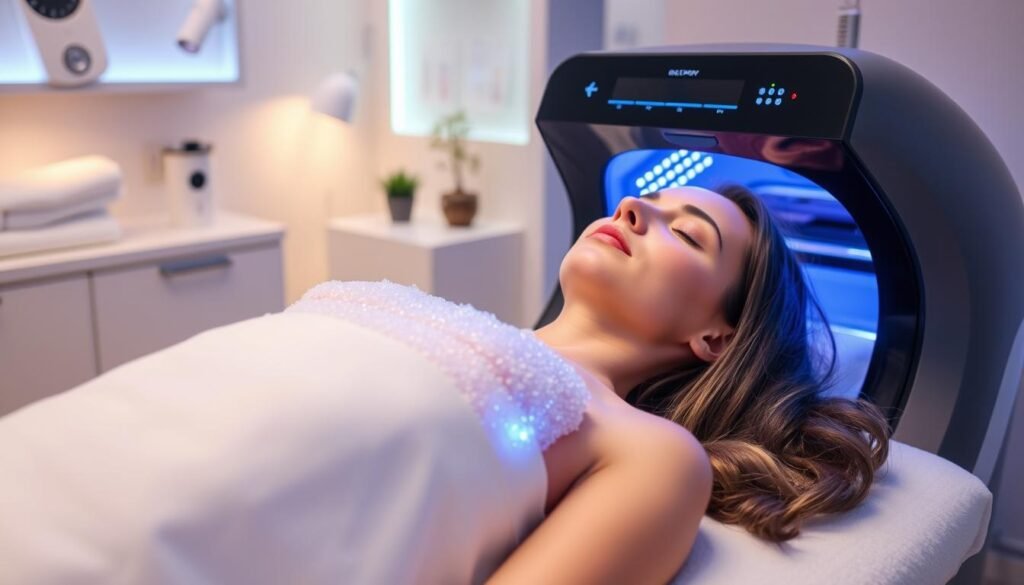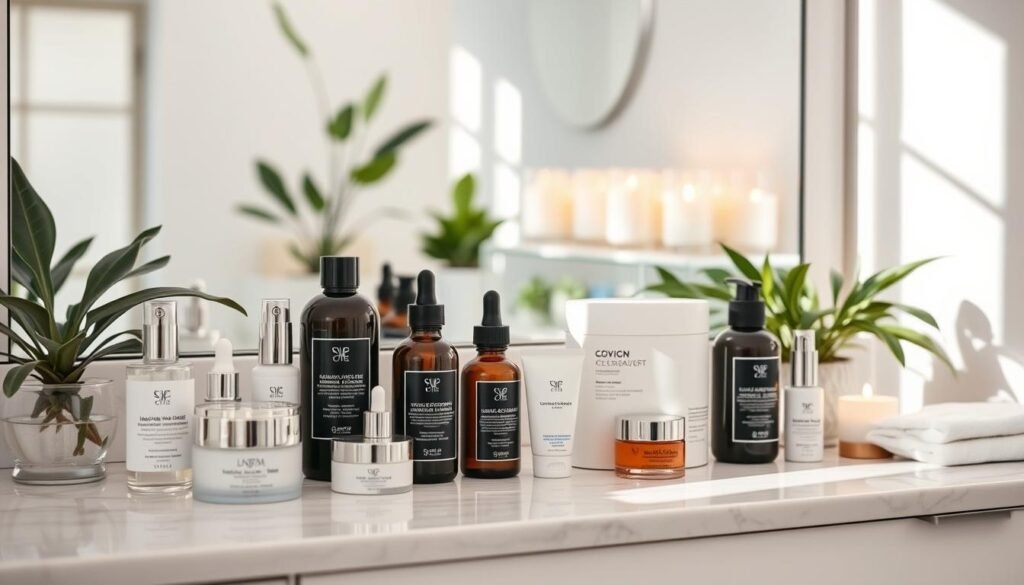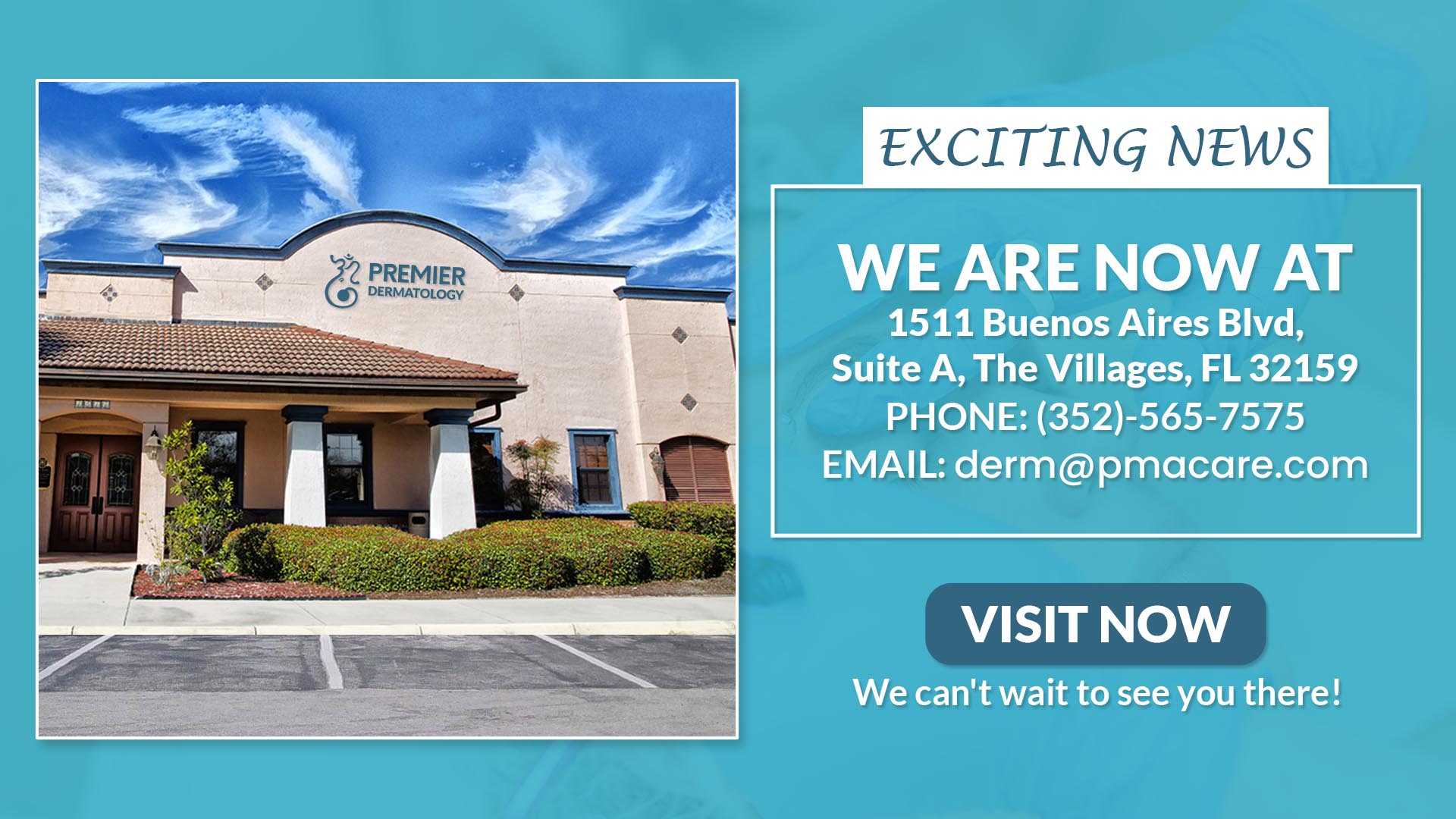Having a clear growth on your face can worry you more than just its looks. I once found a bump that showed up quickly, making me both scared and curious. Our skin shares stories, and knowing about facial lesions is key for our health and happiness.
Skin lumps and bumps are very common, with most being harmless. In fact, up to 60% of adults have some kind of skin growth. It’s important to understand these clear growths and their treatment options. Our guide will help you learn how to manage facial lesions safely and well.
Key Takeaways
- Most facial growths are benign, with only 1-2% potentially being malignant
- Professional consultation is key for accurate diagnosis
- Many treatment options exist for clear growth on face
- Early detection and monitoring are vital for skin health
- Prevention involves a healthy lifestyle
- Different facial lesions need specific treatments
- Good skincare can help prevent growths
Understanding Common Types of Clear Facial Growths
Skin growths can seem mysterious and worrying, but most are harmless. Our guide will help you identify and understand different types of facial bumps and growths that might catch your attention.
Many people encounter various skin bumps throughout their lives. These growths can range from completely harmless to ones that might need a doctor’s check-up.
Identifying Skin Tags and Moles
Skin tags are common, affecting nearly 50% of adults. They usually show up in areas that rub together a lot, like:
- Neck
- Underarms
- Groin regions
Moles, another frequent skin feature, can change in size, shape, or color. These changes might signal a risk of skin cancer.
Recognizing Seborrheic Keratosis
Seborrheic keratosis usually shows up after age 30. These growths are typically:
- Raised
- Waxy
- Light to dark brown
“Most skin growths are benign and do not require immediate medical intervention.”
Distinguishing Cysts and Milia
Epidermoid cysts and sebaceous cysts are different types of skin formations. Milia appear as tiny, white bumps often found around the eyes and cheeks. These small, pearl-like growths typically develop when keratin becomes trapped beneath the skin’s surface.
Understanding these variations helps you make informed decisions about possible treatments and when to seek professional medical advice.
Medical Causes Behind Clear Growth on Face
Learning about the medical reasons for facial growths can improve skin health. Many factors lead to skin issues, like keratosis pilaris and acne cysts.
Our research shows several key medical factors that cause facial growths:
- Hormonal Changes: Big changes in hormone levels can change the skin.
- Genetic Predisposition: Our genes greatly affect our skin.
- Immune System Responses: Our body’s immune reactions can show up as skin growths.
Medical conditions cause skin problems in different ways. Keratosis pilaris shows up as small, rough bumps from keratin buildup. Acne cysts happen when hair follicles get blocked with oil and dead skin cells.
Skin growths are not just cosmetic concerns but can be indicators of underlying health conditions.
| Medical Cause | Prevalence | Risk Factors |
|---|---|---|
| Hormonal Changes | 65% of adults | Age, Pregnancy, Menopause |
| Genetic Factors | 40% of cases | Family History, Inherited Conditions |
| Skin Conditions | 35% of individuals | Immune System, Environmental Exposure |
Our medical experts suggest understanding these causes for better treatment. Getting professional advice can offer tailored solutions for your skin issues.
Risk Factors and Prevention Methods
Understanding the risk factors for skin tags and warts is key to preventing them. Our guide covers the main factors that lead to facial growths.
Genetic Predisposition
Some people are more likely to get skin tags and warts because of their genes. Family history is a big factor in who gets these growths.
- Inherited skin conditions increase susceptibility
- Genetic factors impact skin cell reproduction
- Familial tendency toward skin growths
Lifestyle Factors
Our lifestyle choices can affect the risk of warts and skin tags. Weight, exercise, and health are all important.
| Lifestyle Factor | Impact on Skin Growths |
|---|---|
| Obesity | Higher risk of skin tags |
| Sedentary Lifestyle | Increased vulnerability to skin changes |
| Poor Nutrition | Potential skin health deterioration |
Hormonal Influences
Hormonal changes can cause skin tags and other growths. Changes during pregnancy, menopause, or endocrine disorders can trigger them.
“Hormonal shifts can dramatically impact skin health and growth patterns.” – Dermatology Research Institute
To prevent these growths, live a healthy lifestyle. Protect your skin from too much sun. Also, talk to a doctor about any unusual skin changes.
Professional Treatment Options Available
Medical experts have many advanced treatments for clear growth on the face. They know that facial lesions need special care for safe and effective removal.
- Cryotherapy: Freezing treatment using liquid nitrogen
- Electrocautery: Burning small growths with electrical current
- Surgical excision: Precise removal of facial lesions
- Laser therapy: Targeted removal with minimal scarring
Each method has its own benefits for removing clear growth on the face. Dermatologists usually suggest a treatment plan based on:
- Size of the skin growth
- Location on the face
- Patient’s skin type
- Overall health condition
*”The key is selecting the most appropriate treatment for your specific skin condition,”* says top dermatological experts.
Professional treatments like Mohs surgery have a 99% cure rate for common skin growths. Cryosurgery treats small skin lesions in 85-90% of cases. This gives patients reliable solutions for facial skin concerns.
We suggest seeing a board-certified dermatologist. They can check your facial lesions and suggest the best treatment.
Cryotherapy: Freezing Treatment Procedure
Cryotherapy is a new way to remove skin bumps and warts. It uses very cold temperatures to safely get rid of unwanted skin growths.

The method uses liquid nitrogen to freeze specific skin areas. This quickly kills off abnormal tissue. It’s a non-invasive way to fix many skin problems.
How Cryotherapy Works
Liquid nitrogen is key in cryotherapy. It cools skin bumps to -320°F. This cold kills cells through controlled tissue death.
Healthcare experts do the following during treatment:
- Apply liquid nitrogen directly to targeted skin growths
- Freeze the specific area for 10-30 seconds
- Allow natural healing processes to remove damaged tissue
Recovery and Aftercare
Recovery from cryotherapy takes 7-10 days. Important steps include:
- Keep the treated area clean and dry
- Apply broad-spectrum sunscreen with SPF 30+
- Avoid picking or scratching the treatment site
Expected Results
Cryotherapy works well, with a 90% success rate for some skin issues. About 30% might get blisters, but most heal in 1-3 weeks.
“Cryotherapy offers a precise, modern solution for removing unwanted skin growths with minimal invasiveness.” – Dermatology Research Institute
Side effects can include mild pain, temporary color changes, and skin sensitivity. Always talk to a doctor to see if it’s right for you.
Surgical Removal Techniques
Surgical removal is a precise way to get rid of unwanted skin growths like epidermoid and sebaceous cysts. Doctors use different methods to safely and effectively treat these issues.
- Excision: Removes the entire epidermoid cyst with minimal scarring
- Punch biopsy: Extracts a small, circular section of skin
- Shave excision: Cuts flat growths directly at skin level
Most sebaceous cyst removals happen in a healthcare provider’s office. The choice of method depends on several things:
- Size of the cyst
- Location on the face
- Potential risk of recurrence
“Precision is key in surgical removal of facial growths” – Dermatology Specialists
For full-thickness excision, a 3-4 millimeter margin around the growth is removed. This ensures the cyst is fully taken out. Our medical team uses advanced techniques like cautery to reduce bleeding and speed up healing.
| Procedure Type | Typical Duration | Recovery Time |
|---|---|---|
| Simple Excision | 15-30 minutes | 1-2 weeks |
| Punch Biopsy | 10-15 minutes | 7-10 days |
Always talk to a dermatology professional to find the best surgical method for your epidermoid or sebaceous cyst.
Over-the-Counter Treatment Solutions
Dealing with facial skin issues like milia and keratosis pilaris can be tough. But, many over-the-counter solutions show promise. They offer easy ways to tackle minor skin problems and texture issues right at home.
Removal Creams and Patches
Removal creams and patches are popular for getting rid of skin tags and small growths. About 50% of adults have skin tags, making these treatments very useful. These patches contain special medicines that help remove unwanted skin growths over time.
- Typical patch treatments require 2-3 weeks for complete removal
- Patches work by slowly breaking down skin tag tissue
- Best suited for small to medium-sized skin growths
Home Freezing Kits
Home cryotherapy kits are another option for removing skin growths. They can get as cold as −58°F, similar to what dermatologists do. Cryotherapy freezes and kills targeted skin cells, causing them to dry and fall off.
The American Academy of Dermatology warns that home removal methods can lead to infection and damage to blood vessels.
When using over-the-counter treatments for milia or keratosis pilaris, it’s important to follow the instructions carefully. Always watch how your skin reacts. If your skin issues don’t get better or get worse, it’s best to talk to a healthcare professional.
Natural Remedies for Facial Growths
Dealing with skin tags and acne cysts can be tough. But, some natural remedies might help. We’ll look at home-based solutions for these common skin growths.
Tea tree oil is a strong natural treatment for skin issues. It has antimicrobial properties that can fight acne cysts and skin infections. Always mix tea tree oil with a carrier oil to avoid skin irritation.
Effective Natural Treatments
- Tea Tree Oil: Demonstrates antimicrobial activity against bacterial growth
- Apple Cider Vinegar: Offers antimicrobial properties
- Aloe Vera: Known for anti-inflammatory effects
- Castor Oil: Shows antimicrobial characteristics against skin bacteria
Witch hazel and honey are also good for skin tags and acne cysts. Witch hazel can reduce skin inflammation. Honey has antimicrobial benefits.
Natural remedies can provide supportive care, but they are not guaranteed solutions for complete removal of skin growths.
Important Considerations
| Remedy | Potential Benefits | Precautions |
|---|---|---|
| Tea Tree Oil | Antimicrobial properties | Must be diluted, possible skin sensitivity |
| Apple Cider Vinegar | May reduce bacterial growth | Can cause skin irritation |
| Aloe Vera | Anti-inflammatory effects | Test for allergic reactions |
Before trying home treatments, see a dermatologist. This is true for persistent or concerning skin tags and acne cysts. Everyone’s skin reacts differently to natural remedies.
Tea Tree Oil and Apple Cider Vinegar Methods
Natural remedies are becoming more popular for treating clear growth on face and warts. We look at two strong natural options: tea tree oil and apple cider vinegar. It’s important to use them correctly and understand how they work.
About 60% of people now choose natural skincare over chemical products. Tea tree oil and apple cider vinegar are seen as effective for skin problems. A detailed review of natural treatments shows they can help with many skin issues.
Application Techniques for Natural Treatments
When treating clear growth on face, these methods need to be done carefully:
- Tea Tree Oil Method:
- Dilute 1-2 drops in carrier oil
- Apply with clean cotton swab
- Treat affected area 3 times daily
- Apple Cider Vinegar Approach:
- Dilute with water (1:2 ratio)
- Use clean cotton pad
- Dab gently on warts or skin tags
Safety Precautions
It’s important to be careful when using these treatments. There are some risks to consider:
- Always perform a patch test
- Discontinue use if skin irritation occurs
- Limit application to 10 minutes per session
- Consult healthcare professional for persistent skin growths
Note: Clinical studies show tea tree oil can reduce acne lesions by 5-10%, but individual results may vary. The American Academy of Dermatology advises against home remedies for skin tag removal, stressing the need for professional evaluation.
“Natural doesn’t always mean safe. Always prioritize your skin’s health and seek professional guidance.”
Post-Treatment Skin Care
Proper care after treatment is key for healing facial lesions and avoiding complications. Our guide will help you through the recovery phase and keep your skin healthy.

Right after treatment, your skin needs special care to heal well and avoid risks. Here are important steps to follow:
- Clean the treated area twice daily with a gentle, fragrance-free cleanser
- Apply recommended antibiotic ointment to prevent infection
- Cover the area with a sterile bandage
- Avoid direct sunlight and use SPF 30 broad-spectrum sunscreen
Protecting your skin’s barrier is very important during healing. Transepidermal water loss can happen in the first 48 hours after treatment. So, managing your skin carefully is essential.
Your skin needs extra care and attention during the recovery phase to ensure optimal healing and prevent possible complications.
| Recovery Aspect | Recommended Action | Duration |
|---|---|---|
| Wound Cleaning | Gentle washing | 1-2 times daily |
| Ointment Application | Antibiotic cream | First 3-5 days |
| Bandage Cover | Sterile protective covering | 24-48 hours |
Be on the lookout for warning signs like increased redness, unusual discharge, or persistent pain. These could mean infection and need quick medical help.
- Monitor the treated area for any unusual changes
- Maintain a balanced diet rich in nutrients
- Stay hydrated to support skin healing
- Avoid harsh skincare products during recovery
Keep in mind that everyone heals at their own pace. Being patient and consistent with your care is vital for successful recovery from facial lesions and skin bump treatments.
When to Seek Medical Attention
It’s important to know when to see a doctor about facial growths like epidermoid cysts and sebaceous cysts. Not every skin change needs a doctor right away. But, some signs are a big warning.
Critical Warning Signs
Knowing the red flags can help you decide when to see a doctor. Our experts say to watch for these signs:
- Growths that last more than two weeks
- Sudden changes in size or color of epidermoid cysts
- Unexplained bleeding or oozing
- Significant pain or tenderness around sebaceous cysts
- Rapid growth or transformation of skin lesions
Emergency Situations
Some situations need you to go to the doctor right away. Look for these urgent signs:
- Severe inflammation around cysts
- Signs of infection like redness, warmth, or pus
- Irregular borders or color variations in skin growths
- Sudden appearance of multiple new growths
“Early detection is key in managing skin health risks,” says dermatological research.
About 1 in 5 Americans will get skin cancer by age 70. Regular check-ups are key. Skin changes can mean serious health issues. So, seeing a doctor quickly is vital for your skin’s health.
| Condition | Warning Signs | Recommended Action |
|---|---|---|
| Epidermoid Cysts | Rapid growth, pain | Dermatologist consultation |
| Sebaceous Cysts | Inflammation, infection | Immediate medical assessment |
| Suspicious Growths | Color/shape changes | Professional evaluation |
While not all skin growths are serious, getting a doctor’s opinion is smart. It helps keep your skin healthy.
Prevention Tips for Future Growth
Keeping your skin clear is all about smart care and being proactive. We know how tough it can be to deal with skin issues like milia and keratosis pilaris. They can pop up out of nowhere.
To stop skin growths and keep your skin healthy, follow these important steps:
- Practice consistent skincare hygiene by washing your face twice daily
- Use non-comedogenic skincare products to prevent clogged pores
- Protect skin from sun damage with SPF 30+ sunscreen
- Stay hydrated and maintain a balanced diet
If you’re prone to milia or keratosis pilaris, you need special care. Gentle exfoliation and moisturizing can help prevent these skin conditions from developing.
“Prevention is always better than cure when it comes to skin health.”
Regular skin checks can catch problems early. We recommend seeing a dermatologist if you notice skin changes or unusual growths.
- Manage stress levels through relaxation techniques
- Avoid harsh skincare treatments
- Use lukewarm water when cleansing
- Choose breathable, natural fabrics
By following these preventive tips, you can lower the chance of unwanted skin growths. And you’ll keep your skin looking healthy and clear.
Cost Considerations and Insurance Coverage
Dealing with acne cysts and skin tags can be tough, both medically and financially. Knowing the costs helps patients choose the best treatment.
The cost of treating facial growths changes a lot. It depends on the treatment and where you are. Think about your budget before you decide to remove them.
Treatment Cost Ranges
- Over-the-counter removal methods: $10 – $50
- Cryotherapy treatments: $100 – $500
- Surgical removal of skin tags: $150 – $1,500
- Mohs surgery for complex growths: $1,000 – $5,000
Insurance Coverage Insights
Most insurance sees skin tag removal as a cosmetic procedure. This means you might have to pay for it yourself.
| Procedure Type | Typical Insurance Coverage |
|---|---|
| Cosmetic Skin Tag Removal | Not Covered |
| Medical Necessary Acne Cysts Removal | Partially Covered |
| Suspicious Growth Evaluation | Often Covered |
“Always verify your specific insurance plan’s coverage before scheduling any procedure.”
If you have medical concerns about acne cysts or skin tags, talk to your doctor. They can help show why you need treatment. This might help get more insurance coverage.
Cost-Saving Strategies
- Check insurance policy details
- Request price estimates from multiple providers
- Explore flexible spending accounts
- Discuss payment plans with medical offices
Knowing what you might spend helps you plan your budget for skin treatments.
Recovery Timeline and Expectations
Knowing how to heal after treating clear growth on the face is key for patients. Each treatment for facial lesions has its own healing time and what to expect.
- Minor procedures usually need 2-3 days to recover
- Medium-sized treatments might require 3-4 days off work
- Big procedures could need 5-7 days of rest
Most facial lesion removals follow a similar healing pattern. Swelling usually peaks within 48 hours and then goes down over a week. To manage pain, follow the doctor’s advice.
| Procedure Type | Initial Healing Time | Complete Recovery |
|---|---|---|
| Minor Skin Tag Removal | 7-10 days | 2-3 weeks |
| Mohs Surgery | 2-4 weeks | 8-10 weeks |
| Cryotherapy | 5-7 days | 2-4 weeks |
Proper wound care and sun protection are key to avoid scarring and speed up healing.
It’s important to follow your doctor’s aftercare advice. Using sunscreen with SPF 30 or higher helps protect the area from the sun and aids in healing.
- Nearly 90% of treatment sites are fully healed within 2 months
- Facial wounds heal faster than body wounds
- Healing rates can differ based on health and age
Be realistic about healing times. Regular check-ups are vital to track progress and catch any issues early.
Conclusion
We’ve looked into the world of skin bumps and warts. We’ve talked about how to spot them, treat them, and manage them. It’s key to know about these skin issues, as they can be simple or serious.
It’s important to know the difference between various facial growths. This knowledge helps in getting the right treatment. Whether it’s sebaceous hyperplasia, skin tags, or other skin problems, seeing a doctor is a must. Our research shows that catching these issues early and treating them right can make a big difference.
If you live in Central Florida and need top-notch skin care, our clinics are here for you. We have locations in Orlando, Clermont, The Villages, Kissimmee, Ocala, Bushnell, and Belleview. Our skilled dermatologists are ready to help you with your skin concerns.
To book a consultation or to talk about your skin worries, call us at +1(352) 565-7575. We’re here to help you get the best skin health and confidence. Our care is professional and caring.
FAQ
What are the most common types of clear growths on the face?
Are clear facial growths dangerous?
Can I remove clear facial growths at home?
What causes clear growths on the face?
How much do professional removal treatments cost?
FAQ
What are the most common types of clear growths on the face?
Common clear growths on the face include skin tags, milia, and epidermoid cysts. Also, sebaceous cysts, keratosis pilaris, and small warts. They differ in size, texture, and look. Causes can be hormonal changes, genetics, or health issues.
Are clear facial growths dangerous?
Most clear facial growths are harmless. But, watch for changes in size, color, or texture. See a dermatologist if growths grow fast, change color, hurt, or get irritated or bleed.
Can I remove clear facial growths at home?
We advise against home removal of facial growths, except for small ones. Trying to remove them can cause infection, scarring, or spread the growth. It’s safer to get professional help.
What causes clear growths on the face?
Clear facial growths can come from many things. Hormonal changes, genetics, age, and skin type are common causes. Also, health conditions and lifestyle choices like diet and skincare routine play a role.
How much do professional removal treatments cost?
Costs vary by growth type and removal method. Cryotherapy can cost 0-0. Surgical excision might be 0-
FAQ
What are the most common types of clear growths on the face?
Common clear growths on the face include skin tags, milia, and epidermoid cysts. Also, sebaceous cysts, keratosis pilaris, and small warts. They differ in size, texture, and look. Causes can be hormonal changes, genetics, or health issues.
Are clear facial growths dangerous?
Most clear facial growths are harmless. But, watch for changes in size, color, or texture. See a dermatologist if growths grow fast, change color, hurt, or get irritated or bleed.
Can I remove clear facial growths at home?
We advise against home removal of facial growths, except for small ones. Trying to remove them can cause infection, scarring, or spread the growth. It’s safer to get professional help.
What causes clear growths on the face?
Clear facial growths can come from many things. Hormonal changes, genetics, age, and skin type are common causes. Also, health conditions and lifestyle choices like diet and skincare routine play a role.
How much do professional removal treatments cost?
Costs vary by growth type and removal method. Cryotherapy can cost $100-$500. Surgical excision might be $200-$1,000. Insurance might cover some costs, so check with your provider.
Are natural remedies effective for removing facial growths?
Natural remedies like tea tree oil or apple cider vinegar are popular. But, they’re not proven to remove facial growths. They might help with small skin issues but not for removing cysts or big growths.
How long is the recovery after professional growth removal?
Recovery time varies by method:
– Cryotherapy: 1-2 weeks
– Surgical excision: 2-4 weeks
– Minor procedures: 7-10 days
Always follow your healthcare provider’s aftercare instructions for healing.
When should I see a doctor about a facial growth?
See a doctor if you notice:
– Rapid growth
– Changes in color
– Persistent pain
– Bleeding
– Unusual texture
– Size larger than 1/4 inch
These signs might mean a serious issue that needs a doctor’s check.
,000. Insurance might cover some costs, so check with your provider.
Are natural remedies effective for removing facial growths?
Natural remedies like tea tree oil or apple cider vinegar are popular. But, they’re not proven to remove facial growths. They might help with small skin issues but not for removing cysts or big growths.
How long is the recovery after professional growth removal?
Recovery time varies by method:
– Cryotherapy: 1-2 weeks
– Surgical excision: 2-4 weeks
– Minor procedures: 7-10 days
Always follow your healthcare provider’s aftercare instructions for healing.
When should I see a doctor about a facial growth?
See a doctor if you notice:
– Rapid growth
– Changes in color
– Persistent pain
– Bleeding
– Unusual texture
– Size larger than 1/4 inch
These signs might mean a serious issue that needs a doctor’s check.




